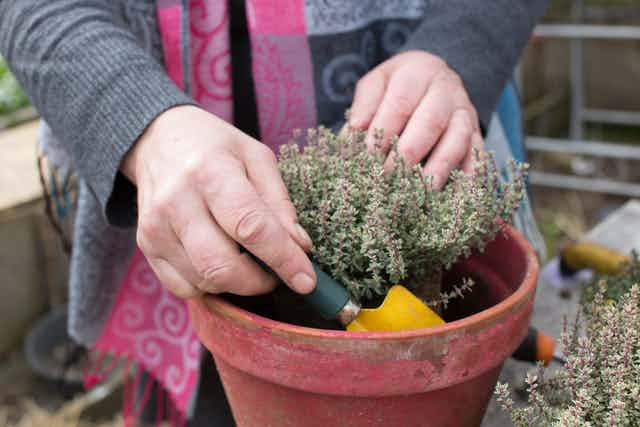Across Europe, unprecedented numbers of asylum seekers are currently waiting for a decision on their refugee status. Unable to legally work or study, and with very limited funds, many of them feel as though they’re in a state of limbo; like their lives have been put on hold.
With shrinking public sector funding, there are even fewer resources available to help asylum seekers in this position. But now, new research shows that urban parks and public spaces can provide a crucial free resource to enhance asylum seekers’ well-being, and help them to integrate.
Our interviews with asylum seekers, support workers and park managers revealed that parks and other green spaces in the city are places where asylum seekers can gain confidence by taking part in local life, and find much needed moments of respite from hardship. Khalid, a Syrian refugee in London, said:
I like to see people happy. When we sit in the park we say “hello” to people. When we see someone with an Arabic face we talk to them, but we talk to anyone if they can understand our English.
A group effort
Some media outlets are quick to highlight instances of misconduct and rough sleeping by refugees in public spaces. But in reality, many asylum seekers try to remain invisible, staying indoors for fear of attracting the wrong sort of attention.
Recalling their first weeks and months in new cities, many asylum seekers talk about feeling lost, confused and lonely. They use smart phones to find essential facilities, but Google Maps doesn’t provide much insight into local places or customs. Some parks and public spaces can feel unsafe, especially if asylum seekers have experienced racism or abuse in the past.
We found out that asylum seekers are much more confident exploring outdoors with others. Going with friends or in a group reduces anxiety and makes people feel safer and more comfortable – rather than feeling out of place because of their race, ethnicity or religion. It can also help to challenge negative perceptions of asylum seekers, and the areas in which they live.

For example, in Paris, asylum seekers are offered daily French classes at the steps around the Platz de la Batille de Stalingrad. These free classes help newcomers to improve their language skills and serve as social occasions for meeting friends and exchanging information in the bustling square.
Suddenly, being visible becomes a positive thing. Passers-by can see that asylum seekers are committed to integrating, and open-air educational activities like these challenge perceptions of the neighbourhood as a place for drug dealing and rough sleeping.
Overcoming anxieties
Organised group visits can also help people to discover places that they like in their local neighbourhood, which they can return to later on. Over time, this can help asylum seekers feel more independent in their day-to-day lives.
For example, in Plymouth, UK, an initiative called START Walking offers a series of walking tours, giving university students and asylum seekers a chance to explore the city’s parks and nearby countryside. The walks are opportunities to make friends both within the asylum seeker community and outside it, to exchange experiences and to share memories of home.
Without options to work or study, the daily life of an asylum seeker can feel monotonous and meaningless. One told us, “if you do not get depressed by your journey here, the asylum system will make you depressed”. It can take months or even years for a legal decision to be reached on whether an asylum seeker is granted residence. Many experience high levels of stress as a result of previous trauma, and uncertainty regarding their future.
But initiatives which get people together outdoors can help asylum seekers to relieve their anxieties, learn new skills, talk to locals and even improve their neighbourhoods.
There is a wealth of research that proves the mental health benefits of contact with nature. Even just sitting on a bench outside can help people feel like they are a part of city life. Being outside and enjoying the natural qualities of parks gave many of the asylum seekers we spoke to a few moments of respite from their problems.
Joining in activities such as gardening or outdoor sport also helped them to regain a sense of purpose and develop a routine. For example, gardening projects delivered by Green League in Berlin and the NHS trauma unit (together with local environmental charity Roots and Shoots) in London helped asylum seekers to spend time outside, meet local people and even recover from post-traumatic stress disorder.

Meanwhile, in Manchester, the Wheels for Well-being Cycling Club provides cycling training for asylum seekers and refugees. Group rides build a sense of community among participants, and allow them to explore their neighbourhood more freely.
Both locals and asylum seekers may view parks with suspicion, especially if they’ve heard negative reports or had negative experiences in the past. But we repeatedly found evidence to challenge these perceptions, in the stories joy, participation and healing we heard from our participants. Urban parks can enhance asylum seekers’ mental health and provide opportunities for integration.
Of course, local people and organisations must be realistic about the need to address barriers, and pragmatic about the limited capacity of both the refugee support sector and the parks sector to develop new initiatives. That’s why we recommend that local organisations look for opportunities to collaborate, and find ways to adapt programmes that already work to increase the diversity of participants.
That way, parks have the power to raise the quality of life for newcomers by providing free opportunities to socialise, have fun and take part in community activities – when it’s not raining, that is.

